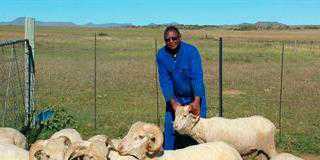Licence applications were submitted by associates of Resource Generation (Resgen), an Australian company and its South African subsidiary Resgen SA. Resgen has shares in two South African companies, Waterberg One Coal and Boikarabelo Coal.
Danie Steenkamp, a game and cattle farmer in the area, said agricultural land is being swept up into mining. Apart from the direct loss of farming hectares, the area also loses hunting and tourism concessions, and skilled people are leaving the area.
The planned projects are situated north-west of Steenbokpan. Test holes have been bored in the affected areas and some farms have been bought.
The project involves four applications, two for mining operations, one for a waste licence and one for an integrated water-use licence. The mining rights application was submitted by Ledjadja Coal in January 2010. It has prospecting rights over these farms: Kruispad, Witkopje, Draai-om, Zeekoeivley, Kalkpan, Vischpan, Kruishout and Osorno. This encompasses 8 983ha of untouched bushveld. The extension project includes 1 356ha of the farm Koert Louw Zyn Pan.
Boikarabelo plans on starting open-pit mining in 2011 and the project has a 30-year lifespan. “We’re here, because the coal is here,” said Hennie van den Aardweg of Resgen SA.
Initially the plan was to sell the coal to Eskom’s planned third coal-fired power station via conveyor belt. But the coal will be exported via Richards Bay in the meantime.
Infrastructure to be developed includes overburden and topsoil stockpiles, ablutions and change houses, a sewerage purification plant, ROM coal stockpiles, coal beneficiation plant and crusher, pollution control dams, temporary hazardous waste storage facility, a rail siding, water supply pipelines, a water-purification plant and access roads. A total of 700 people will be employed when the project is operational.










